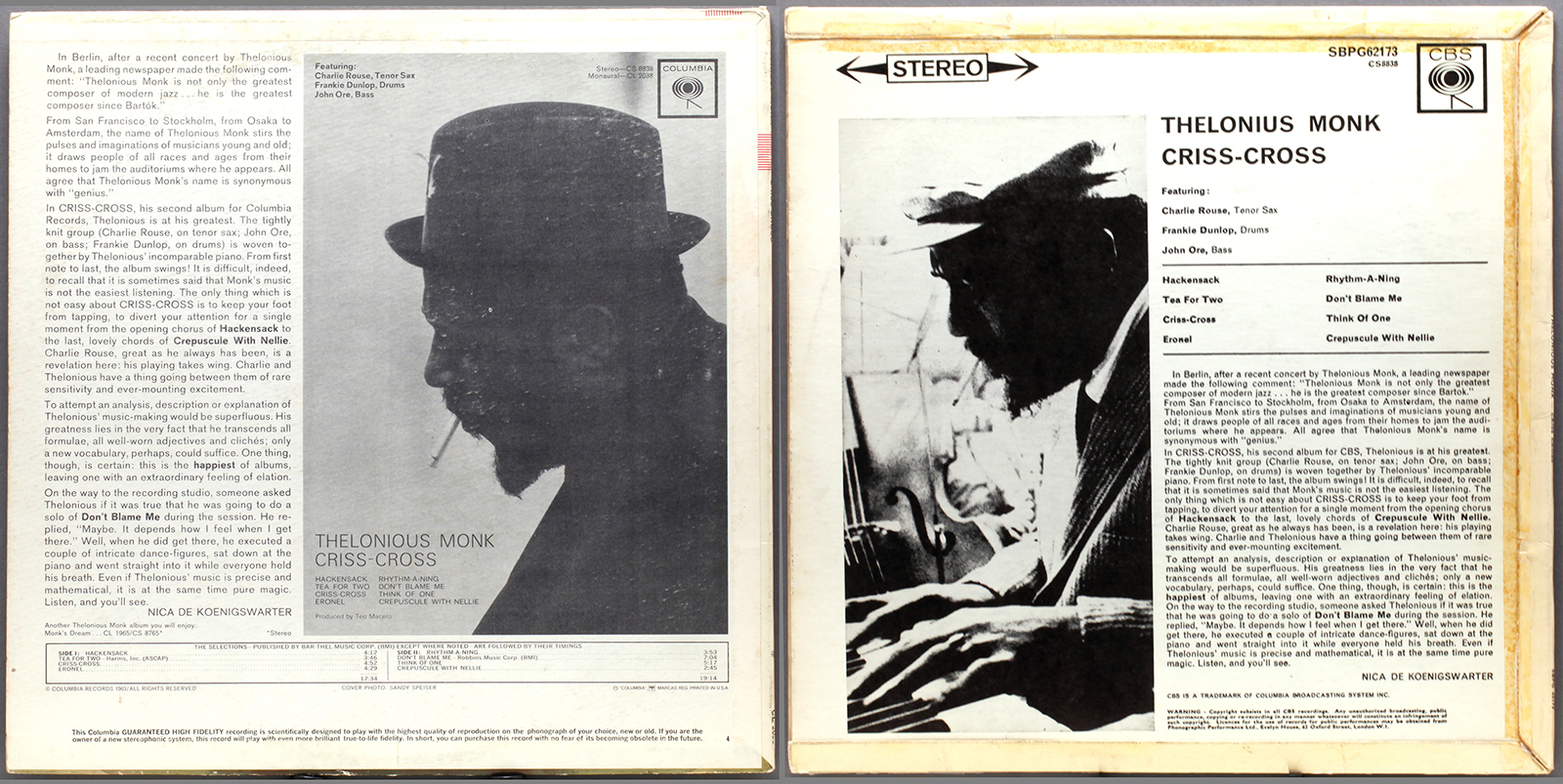The Best Of Thelonious Monk


A treasure chest of jazz is being rereleased this week: “The Complete Riverside Recordings” of Thelonious Monk, a fifteen-disk set of his recording sessions, in the studio and live, for that seminal label. Spanning the period between 1955 and 1961, it's the core of his recorded legacy.
Attention music fans. Microsoft Store will stop selling music on Dec. Download your tracks and read our FAQ for more info. Find album reviews, stream songs, credits and award information for The Best of Thelonious Monk - Thelonious Monk on AllMusic - 2004 - Offering a 'best-of' package.
The set contains the disks of his that I return to most often, and it shows off a wide range of his art. For me, it's the most essential trove of Monk's recordings that exists. Most of the recordings in the set are available separately, as the albums on which they were originally released, but having them together in chronological order tells a musical story that is as much about Monk as it is about the musical times. These fifteen disks find Monk in a wide range of musical settings—solo, trio, quartet, quintet, sextet, septet, and a big band—and locations, including the studio, New York’s Town Hall and the Five Spot, San Francisco’s Blackhawk, and concert halls in Paris and Milan.
The list of Monk's sidemen in this set indicates the level of creativity on display; it includes John Coltrane, Coleman Hawkins, Sonny Rollins, Art Blakey, and Max Roach, and they’re all in stellar form, due not least to Monk’s own musical invigoration. The boxed set was made under the aegis of Orrin Keepnews (who died in March, at the age of ninety-one), the producer and the co-founder of the Riverside label, who, as a critic in the late forties, was among the first to recognize Monk's genius. In 1955, he succeeded in poaching him from another record company, where his albums were unappreciated and his place on the roster was subordinate. Recordings were especially important to Monk at the time because, as a result of trumped-up drug charges, he had lost his cabaret card (in effect, a New York City performance license) and couldn't play in any venue that served alcohol—i.e., jazz clubs. In the set’s copious booklet, Keepnews discusses his plan for establishing the modernist Monk—namely, by making explicit his ties to jazz tradition. He recorded the Monk trio playing compositions by Duke Ellington, in 1955, and followed that album early the next year with one of the trio performing standards from what wasn’t yet called the Great American Songbook.
Those albums offer delightful shocks, such as the “Name That Tune” trouble that Monk so gleefully provokes with his radical rearrangements of familiar melodies. His revision of “Mood Indigo” seemingly puts more notes into the first phrase than Ellington’s whole composition contains. He reharmonizes Fats Waller’s “Honeysuckle Rose” nearly to the breaking point and plays exuberantly with “Tea for Two,” toying with its simple melody to tease out a comically obsessive syncopation.
In October, 1956, Keepnews had Monk throw down a wild gauntlet of compositional and organizational audacity, “Brilliant Corners,” featuring the saxophonists Sonny Rollins and Ernie Henry and the drummer Max Roach. In his notes, Keepnews details the trouble that the complex title tune caused the musicians, and the editing tricks that gave rise to the released performance. This recording has a grand, grave sense of moment: it is a coming out of the composer from behind the mask of eccentricity and idiosyncrasy and displaying, in several difficult and expansive works, his thoroughgoing and large-scale musical imagination, even within the relative intimacy of a quintet. Monk was the master of the single note, perfectly selected, timed, and struck so that it would have a symphonic amplitude.
The asymptote of his music is a punctuated silence, which is why he was especially sensitive to his drummers and dependent on them to organize the music's forward motion. Peggle Deluxe Full Version Torrent there. In “The Complete Riverside Recordings,” Monk is joined by the best, including Roach, Blakey, Roy Haynes (who, at the age of ninety, is still working today), Kenny Clarke, Shadow Wilson, and Philly Joe Jones. Monk made his drummers—and, for that matter, almost all of his musicians—rise to the occasion. For me, the most exhilarating of these occasions is the series of recordings issued on the album titled “Monk’s Music,” from June, 1957, featuring Coltrane, Hawkins, and, in particular, Blakey, who displays a scintillating synergy with the pianist. Blakey drives the band with an astonishingly contained heat that is tempered with lyricism—his accompanying accents are witty and melodic, and his solos are the most singable, witty ones that I've ever heard. The entire band is electrified.